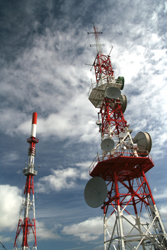Two microwave resonators are better than one
Telecommunications play an increasingly important role in modern society. The demands on the equipment are constantly evolving. The GROWTH Programme funded an RTD project entitled TUF that aimed to develop advanced filters for the telecommunications industry. The TUF project was coordinated by the National Physical Laboratory (NPL) and included six other research institutes. One of the most important project deliverables was a bolometric detector capable of measuring extremely small amounts of radiation. It is based on two microwave resonators that are coupled together. One of the resonators is constructed from strontium titanate (SrTiO3) and its resonant frequency is strongly dependent on temperature while the other provides a stable reference frequency. Careful selection of the shifted frequency provides detailed feedback about the incident radiation which, crucially, does not depend on the volume of the resonator itself. During TUF, the NPL scientists demonstrated that the instrument is sensitive to temperature fluctuations down to billionths of a degree Kelvin (nK). The detector also acts as an insulator, which eliminates any possible electronic contribution and helps improve its resolution. Another advantage is that it is a non-contact method of measurement, making it suitable for a wide range of applications. The National Physical Laboratory and its TUF partners are following up on these promising results.







